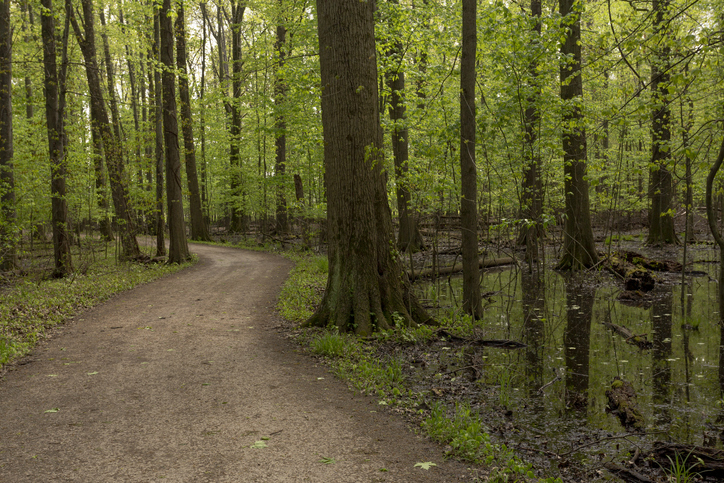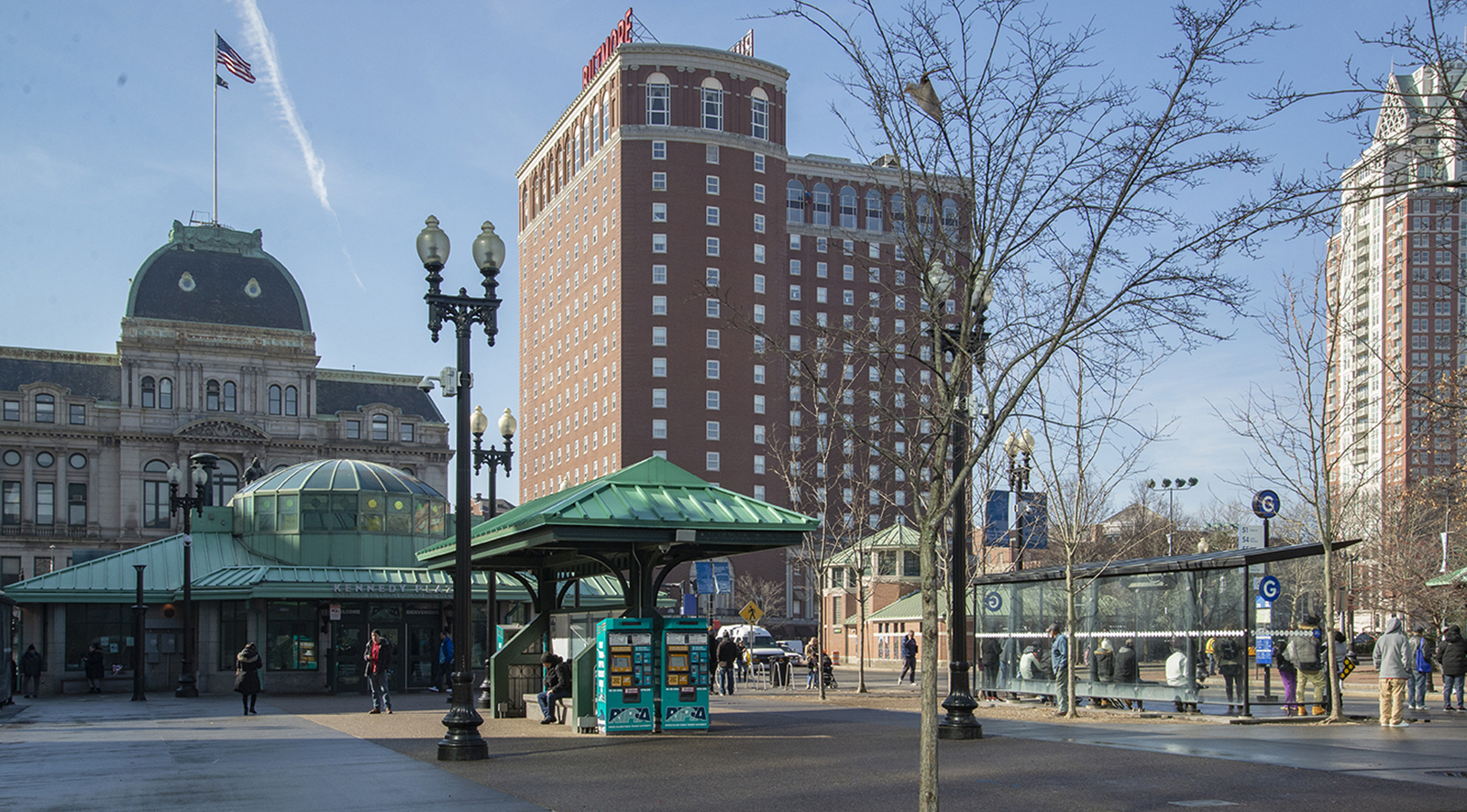Protected Monastery Land No Place for New Cumberland Public Safety Complex
April 4, 2015
Ralph Waldo Emerson said, “Nature always wears the color of the spirit.” It’s early spring and many Cumberland, R.I., residents may be sensing the exactitude of Emerson’s words, wondering if Nature’s wardrobe, the gray skies, muddied snow piles and the earth’s dark, dampness of late, signify not only that it will be a long haul into spring, but also that Cumberland’s weighty conservation matter at hand is not soon to be solved.
Nature, it seems, is directing us to pause, take note of our sensibilities, and cast a backward gaze upon Cumberland’s serious land-use affair — that certain piece of conservation land, known as the Monastery land, on which the town of Cumberland proposes to build a new public safety complex. Many of us hear Nature’s call, and wish for a wider and deeper reflection of this weighty matter. A look back may allow us to move forward, into a more meaningful and productive spring.
Let’s start in autumn 2004, when the Cumberland Town Council approved the conservation easement and restrictive covenants agreement, and its companion conservation and management plan that, together, protect in perpetuity all 525 acres known as the Monastery land. Both the easement and plan evidence Cumberland’s desire to protect this land from future development of any kind. The grounds are to be used by the public solely for passive recreation, such as hiking, snowshoeing and cross-country skiing. The town is responsible for the continued maintenance of the land.
Around 2012 things changed, a gear switched, and the town’s leaders began eyeing the Monastery land as a place ripe for development. First, as a “Sixth Village” — education and town village — then as the ideal site for a new safety complex.
In 2014, the town drafted Plan A: a ballot question querying voters as to their interest in a safety complex, and whether they would agree with constructing said complex on Monastery land. What followed was a resounding no to the very idea of the Monastery question. Most residents, though, agreed with the general concept of a safety complex.
In July 2014, after the Monastery question was removed from the ballot, and the safety complex was without a home, the town admitted it had no Plan B. So, early this year, a small mayoral-appointed group of residents, collectively known as the Safety Complex Site Committee (SCLC), were tasked with finding a better place to build. In fact, all residents have been invited to tender alternative sites.
Clouds hang low over the SCLC, as it has been handed a list of limited criteria that is nearly impossible to work with: town-owned open space, on a main road, anchored at the center of town, consisting of 6-10 acres of land on which to build a 21,000-plus-square-foot safety complex for $12.5 million. The deadline: three months.
If one does the homework, one will discover that the criteria is based on architectural renderings and cost analyses that were formulated and rendered nearly two years ago. One also will notice that the protected Monastery land is the only land that fits this criteria.
Why is history, remembering our history, important? Well, absent historical knowledge, we can’t possibly understand cause and effect. So how to proceed? What is at risk, and how to calculate it? Living in the void of “now” we can’t envision the future, nor can we comprehend the consequences of our actions today.
Some residents may argue the history, or dredge up the history pre-criteria, pre-2004 easement. Some folks point to the lofty, but misguided, half-century-old ideas of Edward Hayden, the former town administrator during the time Cumberland bought the Monastery land from Our Lady of the Atonement. His musings included setting aside hundreds of acres to develop, among other things, municipal buildings and gathering space, such as a “civic center and possible park.” But these sentiments are moot, and have little in common with the vision of those who effected the easement, the legal document that evidences a more enlightened vision, intent and moral conscience.
After all, conservation begins with morality, for without it our unchecked primitive human need to conquer, to hack through every natural resource, would culminate in the total degradation of our earth
The Monastery land is the largest swath of land in Cumberland under a conservation agreement, and it houses hundreds of diverse species and habitats. Conservation-minded people — people who value raw, open space, and work hard to enhance, or at least maintain, the odds of certain species and habitats thriving in the wild — are dismayed by the idea of building a safety complex on preserved land.
They are flustered by the limited criteria. Some people, however, like the idea of bulldozing and clear-cutting 10 acres of Monastery land. Some people suggest that the town amass more. Let’s take 50 acres. Let’s build a town village. A golf course. Some people couldn’t give a hoot.
Imagine, now, if we are willing to put aside our differences, our preconceived notions, and work together, go back to the drawing board, we could, yes we could, effect a better change. But instead we are here, butting heads for the same reason: progress.
Conservation is progress. Is that not why the town of Cumberland approved the resolution adopting the 2004 easement, and the Monastery’s management plan? A new safety complex is progress, too. The current police station is in shambles, an embarrassment to this town.
Differences, though, are the thorny fragments that weave in and out of the long chain of progress. Differences prick and force us to look at and expand our options, challenge our patience and nudge us toward creative solutions. And creative is what we need, as we are now negotiating, in addition to progress, a fundamental human concern: preservation.
Are we not interested in preserving humankind? Morris Udall, a former U.S. representative from Arizona, said, “The more we exploit nature, the more our options are reduced, until we have only one: to fight for survival.”
His brother Steward Udall, former Arizona congressman and secretary of the interior, said, “Plans to protect air and water, wilderness and wildlife are in fact plans to protect man.”
We need to face it — the acts of preserving and conserving are unequivocally entwined with politics and morality, as environmental guardianship speaks to humanity, to history, our future, and to home. The more we degrade our land, the less of a place we are, and the less we leave or give to our future. The less human we feel. That’s a sobering moment. Who are we? What will signify our humanness, our place in the world, if we are without our conserved land, natural resources and animal life? We’ll soon find ourselves in a foreign land, lost, frantically seeking out signposts to point us toward home; and guess what? There are none.
I think this is what many of us are grappling with. We want improvements, but we don’t want them at the expense of losing our place, our history and our future. While we’re still here, trampling our good earth, we especially need the signposts that guide us home when we get lost.
You won’t know this if you haven’t walked the Monastery land, but the land in question, north of the power lines, is used. I hike it, and I’ve seen it hiked by others. Well-trodden paths snake through it, though it’s less traveled than land near the library, and that’s what makes it special. It’s sadly shortsighted to assume that the Monastery land is the best spot for a safety complex. Will not building on it impose some kind of unrealistic burden on our residents? Will it seriously affect our standard of living? No.
It’s the best place for municipal building(s) only if we are bound and determined to destroy 10 acres of conservation land.
The town itself, in its December 2014 draft of the 2015-2035 Comprehensive Plan, writes of open space: “Cumberland possesses valuable natural areas that provide a unique opportunity for open space preservation and acquisition. Open Space acquisition continues to be a priority that receives a lot of attention in Town as community assets like Diamond Hill Park and the Monastery grow in their usage for recreational activity and for preservation of natural resources and habitat usage.”
The town has options: empty lots (our police station’s fate) in need of revitalization. Developed land, even if acquired, or leased, could be a less-costly option. But we have to rethink the criteria, and perhaps take the logical step of hiring professionals to solve this conundrum, rather than unqualified town residents grasping at straws to save the farm.
What we need to do is formulate a real solution — a solution to our way back home. Let’s hope we arrive there this spring.
Jayne Guertin is a Rhode Island writer and photographer, and member of the Monastery Preservation Alliance. She writes about nature, place, home and dawdling on her blog, Banks of Noon.
Categories
Join the Discussion
View CommentsRecent Comments
Leave a Reply
Your support keeps our reporters on the environmental beat.
Reader support is at the core of our nonprofit news model. Together, we can keep the environment in the headlines.
We use cookies to improve your experience and deliver personalized content. View Cookie Settings




I thought this issue had been resolved . The people are adamantly opposed to this complex going on Monastery property. Has anyone asked Cumberland Mayor Murray about this. Research a story before publishing it.
Dear Roland,
Thank you for your comment.
Yes, much research has been done with respect to this article, and to the subject at hand. Mayor Murray is very much interested in developing the Monastery land for municipal purposes. He knows that many Cumberland residents are opposed to the idea of taking conservation land and replacing it with concrete buildings, but he believes that the land is the best location for development, as do many other Cumberland residents.
Mayor Murray has challenged those residents opposed to such development to find a better location for the safety complex. You can see, then, that this matter is far, far from being resolved.
Jayne Guertin
Jayne, great article,
we continue to fight the good fight. I sent an email to the Mayor proposing Bentley Field for such a complex. I believe the Schofield Farm, which was purchased with open space/recreation funds would be a great place to relocate the ball fields and much safer for vehicles exiting the fields.
I would think this would be acceptable to the family as it would be passive recreation.
frank geary, thegfam1cox.net
frank geary
Thanks, Frank. As we know from last week’s meeting, Schofield is yet another property that the SCLC quickly dismissed. I’m still of the mind that we should be looking at Joly Collision (who suggested the town use their property) AND the current PD for a new police station or complex site. We could build on the Joly lot while the police occupy the existing building. A large bay garage and parking spaces could later be developed on the old site. The Police Chief told us that he likes the location!